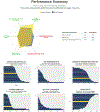Using Participatory Design to Engage Physicians in the Development of a Provider-Level Performance Dashboard and Feedback System
- PMID: 35058160
- PMCID: PMC8885889
- DOI: 10.1016/j.jcjq.2021.10.003
Using Participatory Design to Engage Physicians in the Development of a Provider-Level Performance Dashboard and Feedback System
Abstract
Problem definition: Performance feedback, in which clinicians are given data on select metrics, is widely used in the context of quality improvement. However, there is a lack of practical guidance describing the process of developing performance feedback systems.
Initial approach: This study took place at the University of California, San Francisco (UCSF) with hospitalist physicians. Participatory design methodology was used to develop a performance dashboard and feedback system. Twenty hospitalist physicians participated in a series of six design sessions and two surveys. Each design session and survey systematically addressed key components of the feedback system, including design, metric selection, data delivery, and incentives. The Capability Opportunity Motivation and Behavior (COM-B) model was then used to identify behavior change interventions to facilitate engagement with the dashboard during a pilot implementation.
Key insights, lessons learned: In regard to performance improvement, physicians preferred collaboration over competition and internal motivation over external incentives. Physicians preferred that the dashboard be used as a tool to aid in clinical practice improvement and not punitively by leadership. Metrics that were clinical or patient-centered were perceived as more meaningful and more likely to motivate behavior change.
Next steps: The performance dashboard has been introduced to the entire hospitalist group, and evaluation of implementation continues by monitoring engagement and physician attitudes. This will be followed by targeted feedback interventions to attempt to improve performance.
Copyright © 2021 The Authors. Published by Elsevier Inc. All rights reserved.
Conflict of interest statement
Figures


Comment in
-
Professional Performance Audit and Feedback for Quality Improvement: Necessary but Insufficient.Jt Comm J Qual Patient Saf. 2022 Mar;48(3):129-130. doi: 10.1016/j.jcjq.2021.12.004. Epub 2021 Dec 20. Jt Comm J Qual Patient Saf. 2022. PMID: 35012878 No abstract available.
References
-
- Patel S, et al. Next-generation audit and feedback for inpatient quality improvement using electronic health record data: a cluster randomised controlled trial. BMJ Qual Saf. 2018;27:691–699. - PubMed
-
- Brehaut JC, et al. Practice feedback interventions: 15 suggestions for optimizing effectiveness. Ann Intern Med. 2016. Mar 15;164:435–441. - PubMed

